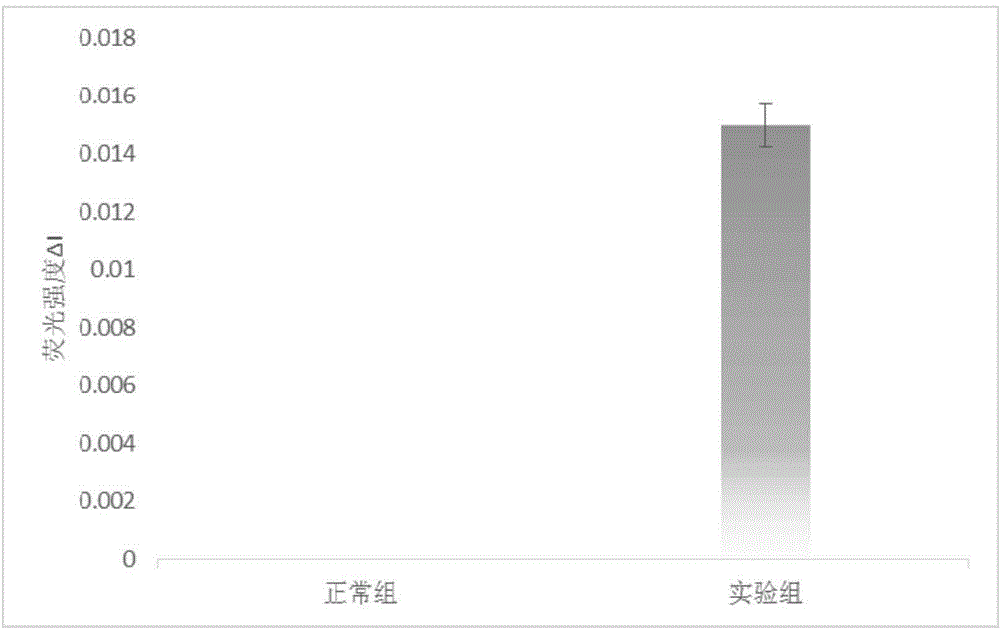Image preparation applied to early rapid detection of Alzheimer's disease and multi-mode imaging of early rapid detection
A multimodal imaging technology for senile dementia, applied in MRI/MRI contrast agents, echo/ultrasound imaging agents, preparations for in vivo tests, etc., can solve the problem of poor sensitivity and specificity of SPECT, Can not achieve early diagnosis, lack of specificity and other problems, achieve the effect of simple and easy detection method, no biological toxic side effects, and avoid biological toxicity
- Summary
- Abstract
- Description
- Claims
- Application Information
AI Technical Summary
Problems solved by technology
Method used
Image
Examples
Embodiment 1
[0027] First prepare transition metal ions, noble metal ions and their nano-clusters and porphyrin reagents with excellent biocompatibility, the specific steps are:
[0028] 1) Dissolve relevant transition metal ions, noble metal ions and their nano-clusters and porphyrin reagents in ultrapure water respectively, and prepare them to a certain concentration.
[0029] 2) Characterize the fluorescence emission and ultraviolet absorption spectra of related transition metal ions, noble metal ions and their nanoclusters, and porphyrin reagents with fluorescence spectrometers and ultraviolet spectrophotometers. Electrochemical and fluorescence studies on the interaction between reagents such as transition metal ions, noble metal ions and their nanoclusters and porphyrin derivatives with excellent biocompatibility, and targeting molecules such as A? protein and other protein molecules and related biological active substances and ultraviolet absorption spectroscopy to obtain the basis ...
Embodiment 2
[0033] In vivo imaging analysis of Alzheimer's disease model mice: Metal ions and their nanoclusters and porphyrin reagents used in the early, rapid, and multimodal detection of Alzheimer's disease. Cluster reagents and porphyrins are injected into normal control model mice and Alzheimer's model mice through tail vein injection or local injection. Metal ions and their nano-clusters and porphyrin reagents can be rapidly enriched in the lesion of the brain, using small animal living fluorescence The imager images the model mouse; the specific steps are:
[0034] (1) Constructing Alzheimer's disease model mice;
[0035] (2) Inject 0.3 mL sterile transition metal ions with a concentration of 10 mmol / L, noble metal ions and their nanoclusters and porphyrin reagent solutions at a concentration of 10 mmol / L, into normal control model mice and Alzheimer's model mice After 1-72 hours of non-invasive real-time dynamic high-sensitivity rapid tracing and monitoring, observe the internal ...
Embodiment 3
[0040] Same as Example 2, except that 0.1 mL of sterile transition metal ions and 100 mmol / L noble metal ions were used. The transition metal ion is cerium ion, the noble metal ion is platinum ion; the nano-cluster is silver nano-cluster; the porphyrin is tetra-p-sulfonic acid-phenyl porphyrin (TSPP). The result is the same as in Example 2.
PUM
 Login to View More
Login to View More Abstract
Description
Claims
Application Information
 Login to View More
Login to View More - R&D
- Intellectual Property
- Life Sciences
- Materials
- Tech Scout
- Unparalleled Data Quality
- Higher Quality Content
- 60% Fewer Hallucinations
Browse by: Latest US Patents, China's latest patents, Technical Efficacy Thesaurus, Application Domain, Technology Topic, Popular Technical Reports.
© 2025 PatSnap. All rights reserved.Legal|Privacy policy|Modern Slavery Act Transparency Statement|Sitemap|About US| Contact US: help@patsnap.com

